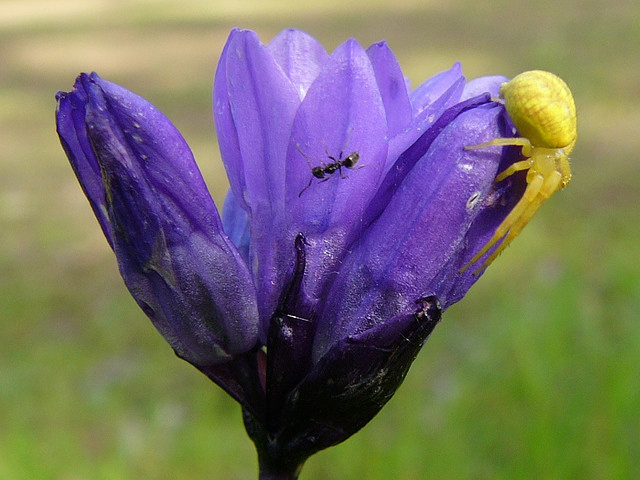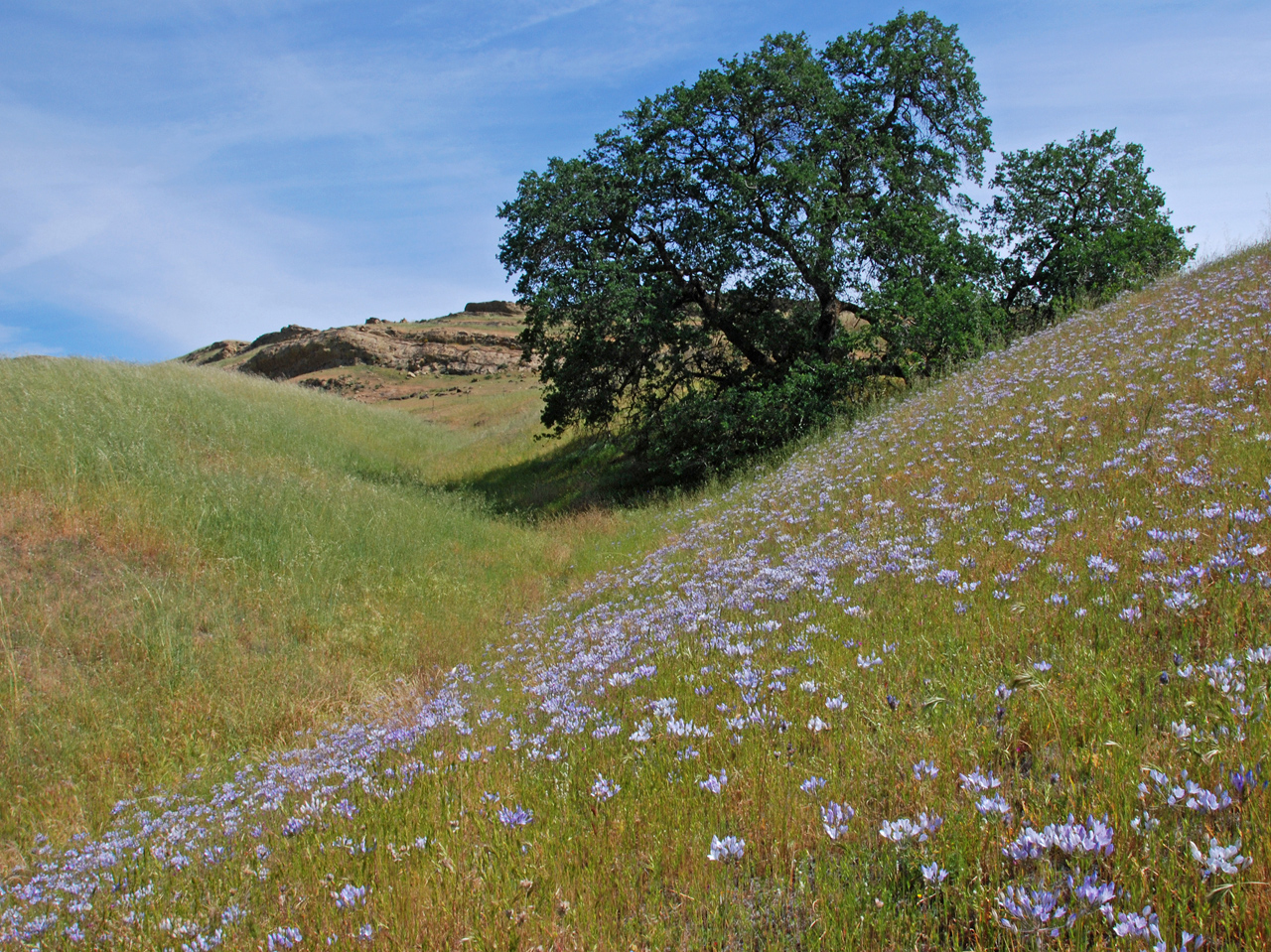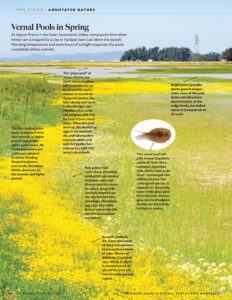A piece of the sky had fallen, was floating a foot above the hill by the road. Distracting, infuriating in 50-mile-an-hour traffic and no shoulder, no pull-off, no way to stop. Naming what we’d seen took a backseat to staying on the road, but Oh yes! — a field of Ithuriel’s spear (Triteleia laxa), its mass of blooms waving on invisibly thin stalks above the short-grazed grass.
They’re named for the angel some of us first met in the bowels of Milton’s Paradise Lost:
Him, thus intent Ithuriel with his spear
Touched lightly; for no falsehood can endure
Touch of celestial temper, but returns
Of force to its own likeness.
“Him” was Lucifer, Satan, the devil who’d squatted at Eve’s ear in toadish costume, his disguise undone by the touch of that spear. Like the magical rule of true names, it reveals the nature of what it touches. In short, it’s the instrument of Getting It Right.
A good double handful of Ithuriel’s choir — the family Themidaceae, including the brodiaeas, triteleias, dichelostemmas, and their cousins — live on the West Coast, some only in California, some only in very small areas of California. Lacking miraculous weapons, we need a field guide and maybe a hand lens to sort them out — some are hard to tell apart from their close relatives, and taxonomists change their minds and reclassify them now and then.
However it might be sorted, Ithuriel’s spear is part of a lovely complex of flowers that salutes our springs and summers, from shade to open meadow to gravelly roadsides. They start as soft, naked green stalks, most standing straight, some species twining onto the nearest support. Then, in ones and twos and great multiples, sometimes after their leaves wither, they burst their various fireworks: bright blue, purple, or yellow flowers, seeming to explode from those grasslike stems.
They’re all geophytes; they make bulblike corms underground, an adaptation for long dry periods like our summers and some places’ winters. Geophytes store nutrition to get a head start in the growing season, and that compact food source gets exploited by burrowing and digging animals, including us. The family gets lumped as “Indian potatoes,” along with mariposa tulips, yampahs, soaproots, and others. Native Americans ate the corms, called them “grass nuts,” and cultivated them by burning and dividing: “After they [the Yurok] got done collecting [bulbs and corms], they would go through and take all the little ones off and replant them . . . so there would be a continual supply,” said Kathy Heffner, of the Wailaki tribe, as quoted in M. Kat Anderson’s book Tending the Wild.

Blue dicks, Dichelostemma capitatum, with a smaller bloom than Ithuriel’s spear’s, does quite well under this kind of cultivation, even if it’s accidental. Look for them along roadsides and other disturbed places, bravely popping up through the gravel in early spring. Ookow, D. congestum, looks very like blue dicks but shies away from the road and blooms later.
Ithuriel’s spear has a look-alike cousin too: Brodiaea elegans (harvest or elegant brodiaea), with similar big blue-to-violet floral heads that appear in similar grassland habitat. B. elegans generally takes the late shift, blooming when the grasses around it are golden-dry, but they can overlap. Like all Brodiaeas, it has “waxy” flowers; triteleias and dichelostemmas don’t, and there are differences in stamen numbers.
They have a blushing white relative, T. hyacinthina, that likes seasonally wet meadows; and a yellow one, T. ixioidies, boringly called “pretty face,” that favors the heights from here all the way up to Sierran meadows. Dichelostemma ida-maia sparks shady woodlands with red and yellow, shyly drooping.
Enjoy them as you meet them and name them if you can; the time it takes is well spent in their company.





